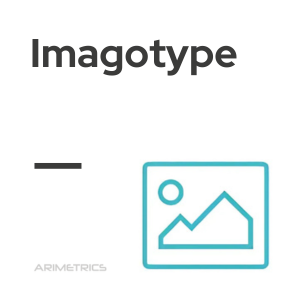 Definition:
Definition:
An imagotype is a type of logo that combines a symbol and text to represent the visual identity of a brand or company. This logo format is unique because the symbol (image) and text (word) are separate, allowing each element to function independently. The term “imagotype” comes from the fusion of“image” (which refers to the icon or symbol),“logo” (which indicates the presence of text) and“type” (which refers to the brand being identified). The imagotype is more complex than other types of logos, since it includes both a logotype (text) and an isotype (image). This duality allows users to associate both the icon and the word with the brand, and since both elements are separable, the brand can be recognized with only one of them. This makes the imagotype a versatile and effective tool for brand recognition.
Characteristics of the imagotype
The logo is a powerful visual tool that allows brands to communicate their identity effectively. Its distinctive characteristics give it flexibility and versatility in its application, making it ideal for a wide range of marketing and commercial uses.
- Flexibility of use: being composed of a symbol and text that can function separately, the logotype offers flexibility to adapt to different contexts and applications. It can be used in spaces where only one of the elements is necessary or preferred.
- Dual recognition: the separation of text and image allows the brand to be recognized by both its symbol and its name. This is especially useful in situations where space is limited or a minimalist approach is required.
- Visual versatility: the ability to break down the logo into its individual components allows the brand to maintain its visual identity in different formats and sizes, from business cards to billboards.
What is an imagotype used for?
The logo is essential for the development of a strong and recognizable brand. Its dual design allows companies to communicate their identity clearly and effectively, while adapting to changing market needs.
- Building brand identity: An imagotype helps build a strong brand identity by allowing the public to associate both the name and the symbol with the company. This duality reinforces brand recognition and recall.
- Communication of values: through its design, an imagotype can communicate the values and essence of a brand effectively, using the symbol to convey emotions or concepts and the text to provide clarity and context.
- Marketing adaptability: Logos are ideal for marketing strategies that require a presence on multiple platforms. Their ability to work across different media, both digital and print, ensures that the brand maintains a consistent and recognizable presence.
- Competitive differentiation: in a saturated market, a well-designed logo can differentiate a brand from its competitors by offering a unique design that resonates with its target audience.
Examples of imagotypes
Logos are a popular choice for many brands because of their ability to combine text and image effectively. Here are some examples of globally recognized logos:
- Nike: although known primarily for its “swoosh” (the isotype), the name “Nike” often accompanies the symbol, forming an instantly recognizable logo.
- Adidas: the Adidas logo combines the iconic three stripes with the brand name, creating a visual identity that is recognized worldwide.
- Pepsi: Pepsi’s logo includes the text of the name along with its distinctive tricolor globe, allowing each element to work independently or together.
- Burger King: combines the brand name with a graphic design depicting a hamburger bun, creating an imagotype that is both descriptive and memorable.
- Lacoste: with its famous green crocodile next to the brand name, Lacoste uses a logo that communicates elegance and sportiness.
